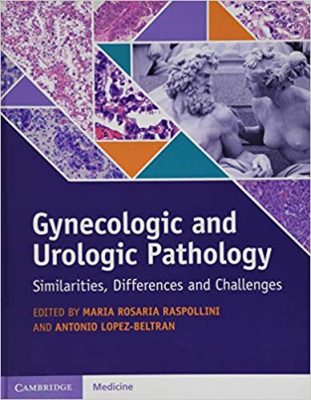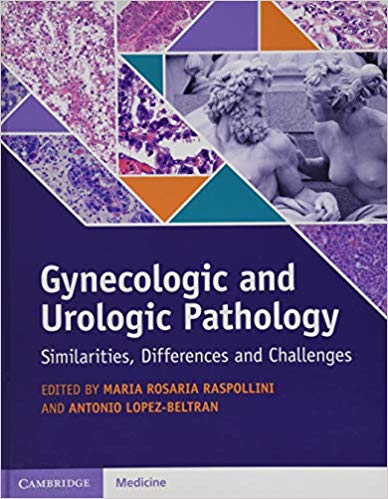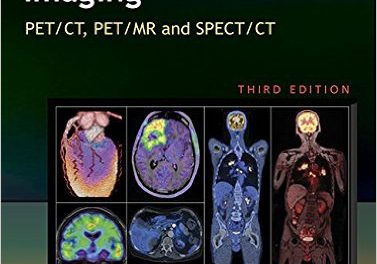 Editors: Maria Rosaria, Raspollini and Antonio Lopez-Beltran
Editors: Maria Rosaria, Raspollini and Antonio Lopez-Beltran
Publisher: Cambridge University Press – 420 pages
Book Review by: Sonu Chandiram
Before sexual organs begin to develop in unborn males and females, human embryos undergo similar development of their urogenital tracts, the editors point out in the Preface of this book.
But genetic and epigenetic factors, such as abnormalities or ailments their father or mother had, may cause the infants to be born in a not-quite perfect state. They may even be born with tumors.
So what is the obstetrician or pediatrician to do, to figure out the best way to treat the baby?
That is when the pathologist comes in, and armed with this book, he or she can figure out the best treatment option.
This book is described as “a comprehensive interdisciplinary compilation of the most common pathologic entities seen in the female and the male urogenital tracts, and is the result of a joint effort by well-known gynecopathologists, uropathologists, dermatopathologists, and embryology experts to focus on gynecologic and genitourinary tract pathologic similarities and differences.”
Forty-two specialists in pathology, mainly from Italy and Spain, but also from four other countries – Austria, Mozambique, Portugal, and the United States – authored the 35 chapters of this book. We name their titles below, to provide you an idea of the topics covered in it:
- Section I – Notes on Embryology, Differentiation and Function of the Urogenital Tract
- Embryonic Development of the Urinary Tract
- Section II – Ovary and Testis: Similarities and Differences
- Non-neoplastic and Tumor-like Conditions of the Ovary
- Non-neoplastic and Tumor-like Conditions of the Testis
- Disorders of Sexual Development
- Ovarian Epithelial-Stromal Tumors and Similar Lesions in the Testis
- Germ Cell Tumors: The Ovary and the Testis
- Sex Cord-Stromal Tumors: The Ovary and the Testis
- Section III – Prostatic Lesions and Tumors
- The Prostatic Utricle and Endometrioid Prostate Cancer
- Cystic Lesions of the Prostate and Lower Genitourinary Tract versus Female Gynecologic Tract Lesions: Similarities and Differences
- Biphasic Tumors of the Urogenital Tract: Selected Topics
- Ectopic Prostate Tissue
- Mesonephric Remnants
- Prostate and Breast Pathology: Similarities and Differences
- Section IV – Kidney Tumors and Neoplasms with Similar Features in the Gynecologic Tract
- Clear Cell Tumors of the Kidney and the Gynecologic Tract
- Mixed Epithelial and Stromal Tumors f the Kidney
- Mixed Epithelial and Mesenchymal Tumors of the Uterus
- Ovarian Mixed Epithelial-Stromal Tumors
- Mesenchymal Tumors of the Kidney
- Mesenchymal Tumors of the Female Genital Tract
- Section V – Neuroendocrine Tumors
- Similarities and Differences in Neuroendocrine Tumors of the Male and Female Genital Tracts and Urinary Tract
- Section VI – Transitional Cell Tumors
- Brenner Tumors And Transitional Cell Tumors of the Ovary
- Transitional Cell Tumors of the Bladder
- Squamo-transitional Carcinoma and Transitional Cell Metaplasia of the Cervix and the Vagina, and Squamous Cell Carcinoma and Squamous Lesions of the Urinary Tract
- Micropapillary Urothelial Carcinoma of the Bladder versus Gynecologic Tract Carcinomas and Micropapillary Features: Similarities and Differences
- Section VII – Urethra and Non-Transitional Tumors of the Bladder
- Pathology of the Female and Male Urethra
- Mulerian Lesions of the Bladder: Endometriosis, Endosalpingiosis, Endocervicosis, and Mullerianosis
- Clear Cell Carcinoma of the Urinary Tract vs. Clear Cell Carcinoma of the Ovary: Similarities and Differences
- Cystic and Solid Tumors of the Urachus vs. Gynecologic Tract Tumors: Similarities and Differences
- Section VIII – Vulva and Penis
- Dermatoses and Inflammatory Diseases of the Vulva
- Dermatoses and Inflammatory Diseases of the Penis
- Intraepithelial lesions of the Vulva
- Intraepithelial lesions of the Penis
- Malignant Neoplasms of the Vulva and Penis
- Miscellaneous Lesions of the Vulva and Penis
- Section IX – Secondary Tumors
- Secondary Tumors of the Male and Female Genital Tracts and Urinary Tract: Similarities and Differences
The chapters in this extensive book discuss the similarities in the male and the female genital tracts’ pathologic entities, as well as highlight and discuss the differences in genetics, histopathology, incidence, and clinical signs. They also emphasize the differential diagnosis of tumors with similar histological features in the two genders.
This book contains numerous captioned color micrographs illustrating the features of the malignancies, as well as photos of disorders and diseased organs or cross-sections thereof, enabling you to see how the abnormalities developed, or are developing.
Each chapter is also replete with many useful references for further study of the topics you want to take closer looks on. All in all, this is a rich source of information on the pathologies found in the genitourinary tracts of males and females.
Editors:
Maria Rosaria, Raspollini is a consultant pathologist I the Department of Histopathology and Molecular Diagnostics at University Hospital Careggi in Florence, Italy. Her expertise and research activity has been focused on gynecologic and urologic pathology.
Antonio Lopez-Beltran is Professor of Anatomic Pathology and Director of the Service of Anatomic Pathology at the Champalimaud Clinical Center in Lisbon, Portugal.







